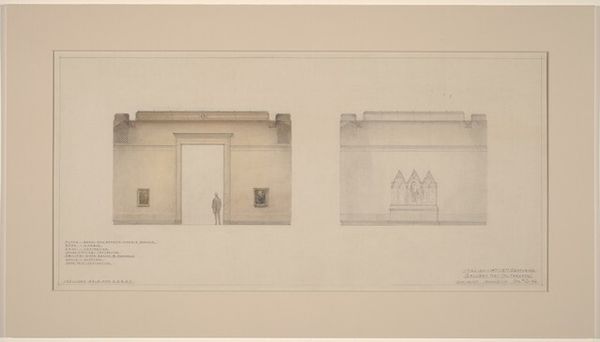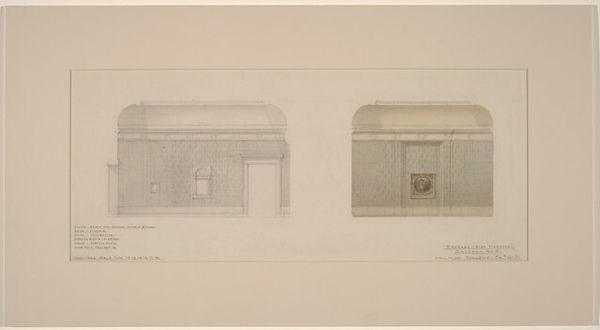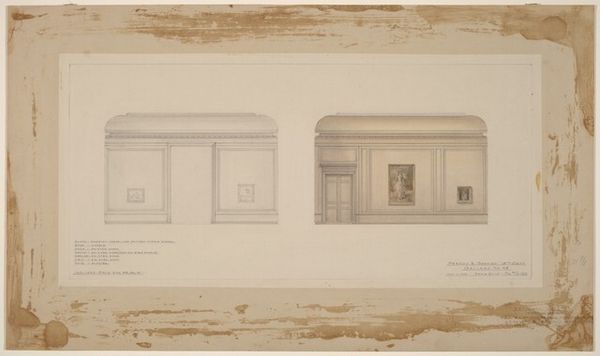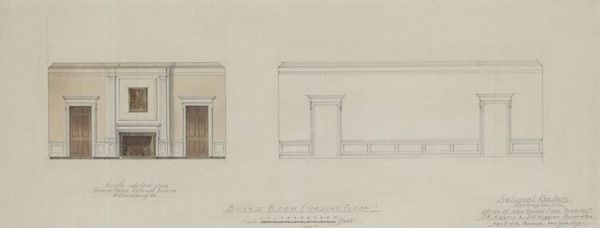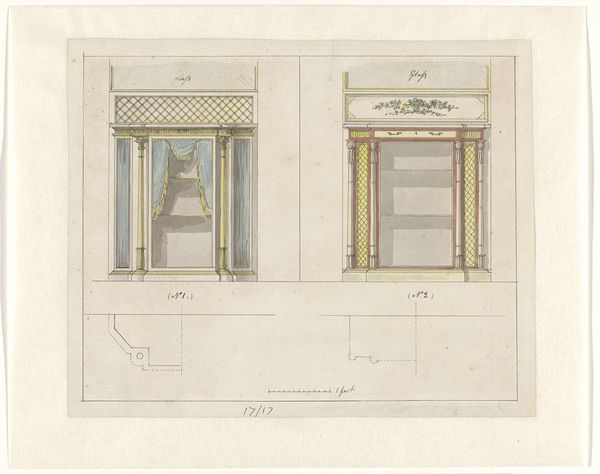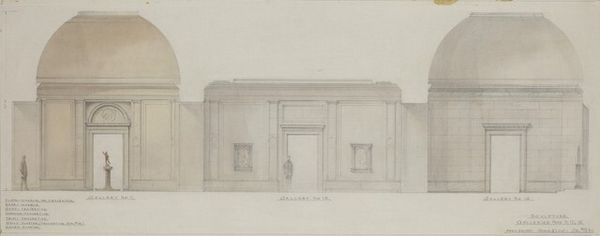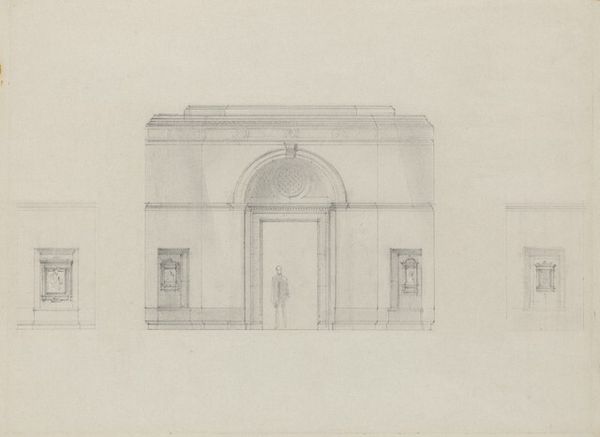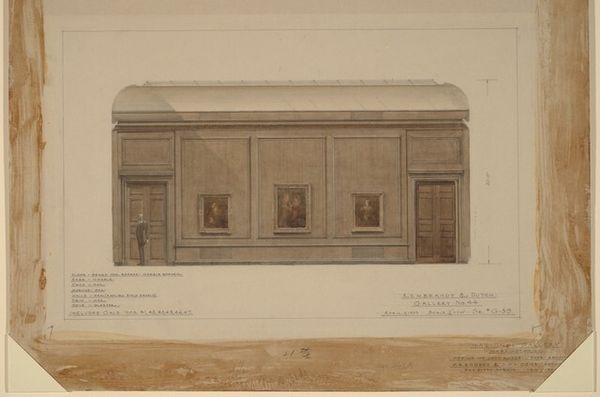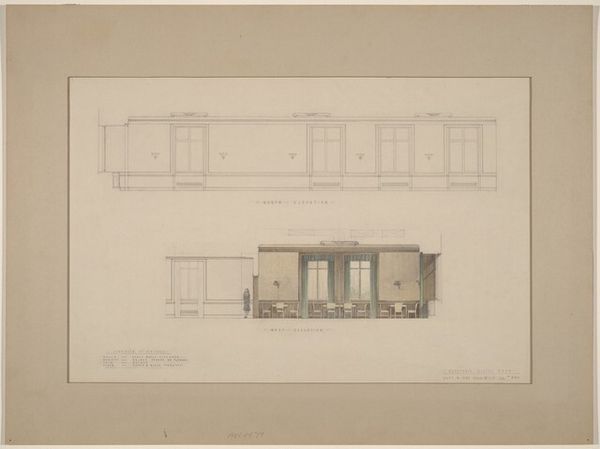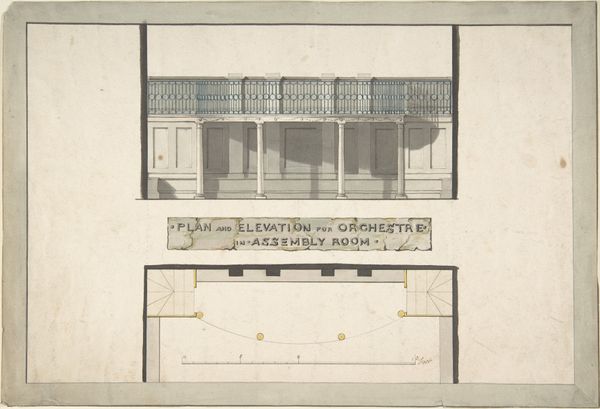
Italian Fourteenth and Fifteenth Centuries: Gallery 1 1939
0:00
0:00
drawing, paper, pencil, architecture
#
drawing
#
etching
#
paper
#
pencil
#
architecture
Dimensions: overall: 55.5 x 26 cm (21 7/8 x 10 1/4 in.)
Copyright: National Gallery of Art: CC0 1.0
Curator: This drawing, simply titled "Italian Fourteenth and Fifteenth Centuries: Gallery 1," was sketched by Eggers and Higgins, Architects, in 1939. It's rendered in pencil and etching on paper. The image depicts an elevation and end view of a gallery space. What catches your eye? Editor: Immediately, I sense this strange blend of precision and almost unsettling emptiness. The architectural details are so crisp, yet the lack of activity, save for a lone figure, suggests a contemplative space, perhaps a longing for history to fill it. It feels very self-consciously composed, and a little haunted, I guess. Curator: The figure you noticed is particularly key. Architects often include human figures in their drawings to give a sense of scale. But you're right; it’s more than just practical. I think he serves as a stand-in for the viewer, beckoning us into this carefully planned space. Editor: Yes, and I find the repetition interesting. The three gothic window frames on the left and the stark rectangles of the wall opposite create a visual rhythm. Are these echoes of particular shapes in the art displayed within? It feels significant. Curator: Definitely! These window frames recall the Gothic period that dominated the 14th and 15th centuries in Italy, a motif repeated. So they not only indicate architectural features but also the types of artworks expected within. The window shape speaks for the cultural epoch being presented here, almost like a herald. Editor: A portal, quite literally, and symbolically. That doorway too feels so weighty in its classical simplicity, doesn't it? As if guarding access not just to physical space but to historical memory. This is so compelling. Even if, yes, haunted by a profound emptiness. Curator: I like that – historical memory. Indeed, I agree. Perhaps this drawing isn't just about designing a space, but creating a vessel for art and the ideas it carries across time. Editor: Exactly. It almost feels less like architecture, more like stage design for art’s drama. A really lovely thing, on balance. Curator: Yes, it makes you reconsider not only the era depicted, but the museum design itself, as well. A moment to contemplate its dual purpose as display space and repository.
Comments
No comments
Be the first to comment and join the conversation on the ultimate creative platform.
